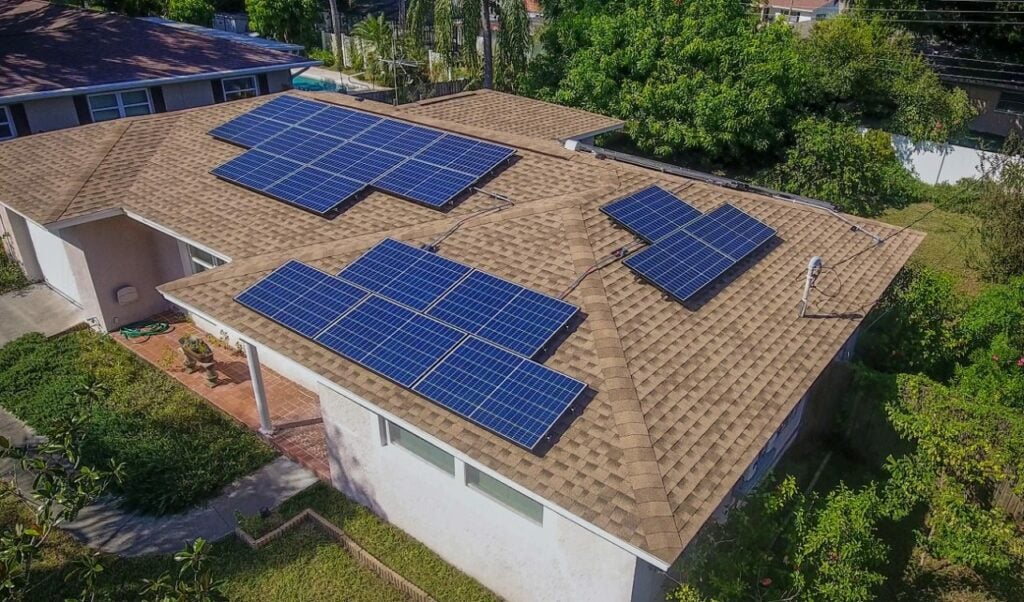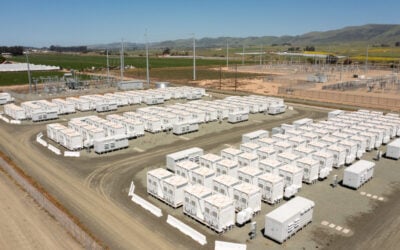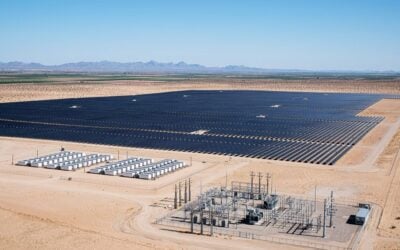
The California Energy Commission (CEC) has approved the participation of aggregated home batteries in an incentive programme to reduce customer net load in extreme events.
At a meeting in late July, the CEC gave the green light to including home battery energy storage systems into the Demand Side Grid Support programme, which kicks in when there is a risk that generation on the grid will not be enough to meet demand. The need is particularly acute during heat waves, when air conditioning adds considerable load.
Enjoy 12 months of exclusive analysis
- Regular insight and analysis of the industry’s biggest developments
- In-depth interviews with the industry’s leading figures
- Annual digital subscription to the PV Tech Power journal
- Discounts on Solar Media’s portfolio of events, in-person and virtual
As well as causing strain for the grid, those spikes in energy demand can also result in spikes of high energy prices.
While California has become a world-leading market for large-scale battery energy storage, earlier this year surpassing 5GW of such systems in the CAISO grid service area, it is thought that distributed energy resources (DERs) such as home battery systems can also play a more prominent role in managing supply and demand.
Regular readers of Energy-Storage.news will have seen that last year, following summer heat waves, various behind-the-meter (BTM) battery storage providers said their customers’ systems contributed in this way.
In one instance, residential solar and storage provider Sunrun said it dispatched energy from 80MW of customer systems to the grid during one evening peak in September 2022, while California utility PG&E said energy stored in a fleet of 2,500 Tesla Powerwalls delivered up to 16.5MW of energy during one mid-August event.
VPPs to help avert grid emergencies
Other providers made similar claims, but the big difference is that those dispatches from customer systems were made as part of the CAISO Emergency Load Reduction Program (ELRP). Under the programme, CAISO issues ‘Flex Alerts’ when supply is becoming too constrained to meet demand.
The alerts effectively ask customers to turn down their usage of power from the grid. That proved effective in managing the California energy system, together with the contribution of large-scale batteries and renewable energy as well as other electricity users simply turning down their electricity use.
However, some providers of systems enrolled in the Flex Alert programme said it would be better if that type of demand response was initiated as a regular course of action and not just left to emergency situations.
What’s different in the latest determination from the California Energy Commission is that Demand Side Grid Support will allow a more systematic approach to using home batteries to help manage the grid.
Fleets of home battery systems will be aggregated into virtual power plants (VPPs), and dispatched during times of peak demand, helping to respond to and avoid grid emergencies and lowering electricity prices by lowering the cost of operating the grid.
Customers will start being signed up during this year, in some cases during this summer, according to the California Solar and Storage Association (CALSSA), which said the rollout of the programme is a promising start.
CALSSA said California needs to do more to incentivise the use of home batteries as grid resources during peak events. There are already thought to be more than 100,000 home battery storage systems online in the state, representing as much as a gigawatt of energy that could be dispatched to help the grid.
A recent study by consultancy Brattle Group found that VPPs could save utilities across the US between US$15 billion and US$35 billion in the next decade. According to the study, commissioned by tech giant Google, putting about 60GW of DER into VPPs would represent about 40% to 60% of the cost of delivering the same resources from alternative sources.
‘Small step in the right direction’
“Energy needs in the 21st Century demand innovative thinking and that is what the California Energy Commission is embracing today. California must do more to encourage consumers to adopt solar and battery technologies at the local level so that we can keep the lights on and the air clean,” Bernadette de Chiaro, executive director of trade group CALSSA said.
“Today’s vote marks one small step but a step in the right direction nonetheless.”
A few days ago, a consortium working to offer solar PV and energy storage at no cost to low-income California households told Energy-Storage.news that unlocking grid services value through virtual power plants would be the key to financing a wider rollout of clean energy equipment at low cost to customers.
A day before the CEC’s three commissioners voted unanimously to allow battery storage VPPs to join Demand Side Grid Support, utility PG&E announced a DERs tie-in with digital automation and energy management specialist Schneider Electric.
The pair have deployed a distributed energy resources management system (DERMS) onto the Microsoft Azure cloud platform, aimed at enabling more proactive management of the grid through resources like rooftop solar PV, electric vehicles (EVs) and batteries.
Schneider Electric’s EcoStruxure DERMS software platform integrates, analyses and optimises DER data, allowing grid operators to leverage them to provide much-needed flexibility to the network.






